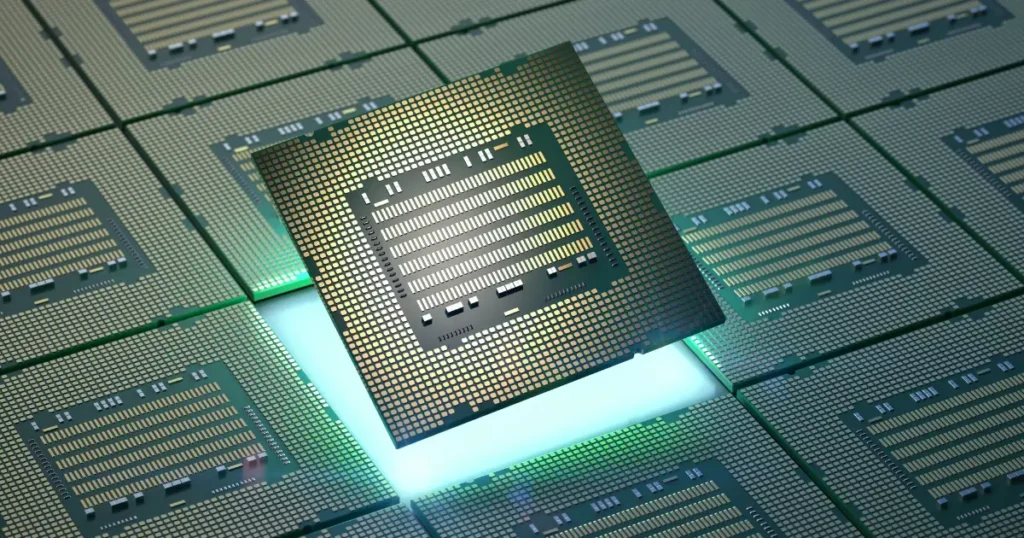Welcome to the first edition of our Semiconductor News Roundup! In an ever-evolving industry, this is your essential summary of the latest updates in chip design, verification and semiconductor innovation. This edition covers highlights from May to July 2025, including AI-powered EDA tools, quantum-driven breakthroughs and verification news from DAC 2025.
Semiconductor News: AI, Quantum ML & Verification Breakthroughs

Siemens Acquires Excellicon
Siemens bolstered its EDA capabilities with the acquisition of timing constraint specialist Excellicon. The move aims to increase engineering productivity, accelerate closure and improve PPA (power, performance, area) metrics, all while addressing growing SoC complexity.
Cadence & NVIDIA Partner for AI-Powered Design in Europe
Cadence is partnering with NVIDIA to bring Industrial AI Cloud capabilities to European manufacturers – streamlining chip and system design with smart automation and HPC-enabled EDA flows.
Read More: Cadence Advances Design and Engineering for Europe’s Manufacturers on NVIDIA Industrial AI Cloud
Arteris Launches Magillem Registers
A new EDA platform from Arteris is targeting the hardware-software divide in complex SoC development. Magillem Registers supports traceability, configuration and system-level simulation in a unified framework – helping accelerate software and hardware co-development.
Read More: Arteris Bridges Hardware-Software Gap with New EDA Tool
Siemens EDA Introduces Customizable AI System at DAC 2025
Announced at DAC 2025, Siemens’ new AI-powered EDA platform allows engineers to tailor design flows using a wide range of AI models with secure cloud or on-prem deployment. The open framework supports both PCB and SoC design environments.
Read More: Siemens turbocharges semiconductor and PCB design portfolio with generative and agentic AI
Celebrating 40 Years of FPGAs
From rapid prototyping to AI acceleration, 2025 marks four decades since the FPGA’s invention. Leading vendors are exploring FPGA+AI hybrids – reflecting the evolving role of reconfigurable logic in modern compute architectures.
Read More: From Invention to AI Acceleration: Celebrating 40 Years of FPGA Innovation
Australia Explores Quantum Machine Learning for Chip Design
Australia’s national research agency, CSIRO, used a five-qubit QKAR (Quantum Kernel-Aligned Regressor) to model contact resistance in GaN semiconductors, outperforming classical ML models. Their approach was validated with real-world GaN devices, marking a breakthrough in applying quantum AI to chip fabrication.
Read More: World’s first semiconductor built using quantum tech unveiled in Australia
MooresLabAI Unveils VerifAgent at DAC 2025
This new platform uses AI to automate repetitive and complex verification tasks, easing the workload on engineering teams and accelerating the time to tapeout for complex ASICs.
Siemens and ARM Collaborate on Digital Twin for AI Vehicles
Siemens and ARM are co-developing digital twin models to simulate behaviour across electronics, mechanics and software layers – speeding up validation and ensuring safety in AI-defined vehicles.
Read More: Siemens and Arm work together to build Digital Twin solutions for AI-Defined Vehicle
Watch & Listen: Lunchtime Learning

- Video – SemiEngineering: Agentic AI In Chip Design
- Podcast – SemiWiki: 3DIC Progress and What’s Coming at DAC
- Podcast – EETimes: The State of Multi-Die Testing: Essential Insights for Designers
- Video – Veritasium: This mechanism shrinks when pulled
- Video – Interesting Engineering: How Quantum Computing Works & Why It Really Matters
- Video – SemiEngineering: The Road to Super Chips
Further Reading

- EETimes: Get More Reliable Automotive ICs with a Shift Left Design Approach
- SemiEngineering: Closing The RISC-V Verification Disconnect
- EETimes: Shift-Left Verification: Why Early Reliability Checks Matter
- Silicon Republic: ‘Information Explosion’: How AI is Changing the Research Sector
- SemiEngineering: Verification Software and Methodology Insights (CadenceLIVE)
- Siemens/SemiEngineering: Smarter, Faster, Leaner: Rethinking Verification For The Modern Era
- SemiEngineering – Technical Paper: HW Security: A Hybrid Verification Method Combining Simulation And Formal Verification (RPTU, UCSD)
- Embedded: Integrating Classical Control Electronics Into Quantum Computing
- EETimes: Maintaining Automotive System Safety and Security through Automated Verification
- Embedded: How Single-Wafer Processing will Transform Chip Manufacturing
- SemiEngineering: Mobile Chip Challenges In The AI Era
What’s Next?
From AI-powered EDA platforms and quantum-enhanced modeling to breakthroughs in verification and digital twin technologies, it’s clear to see the semiconductor landscape is evolving at pace. These innovations aren’t just theoretical – they’re reshaping how engineers design, verify and deliver silicon in an increasingly complex field.
As we head into the second half of 2025, make sure to follow AsicPro Solutions on Linkedin and stay tuned for deeper insights, practical takeaways and emerging trends from the world of semiconductors.
